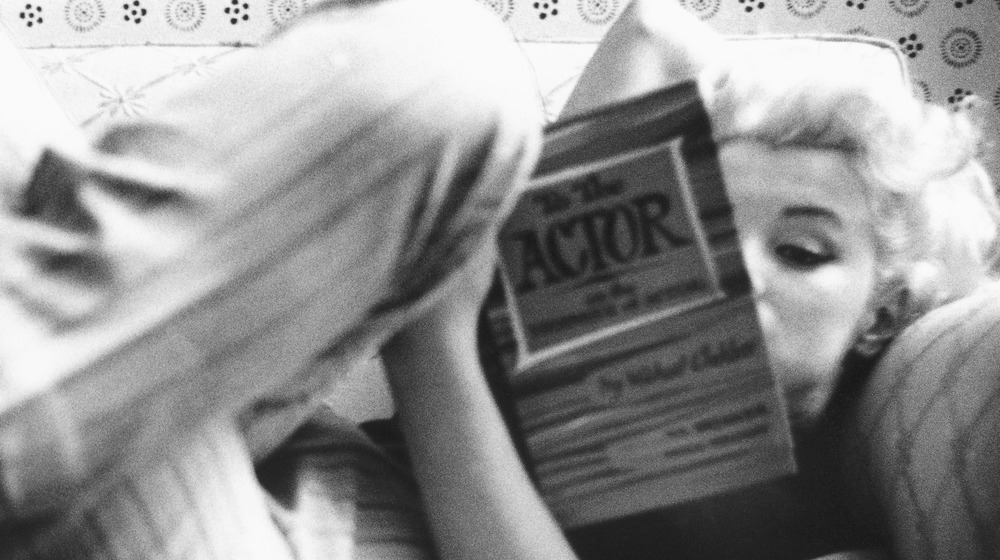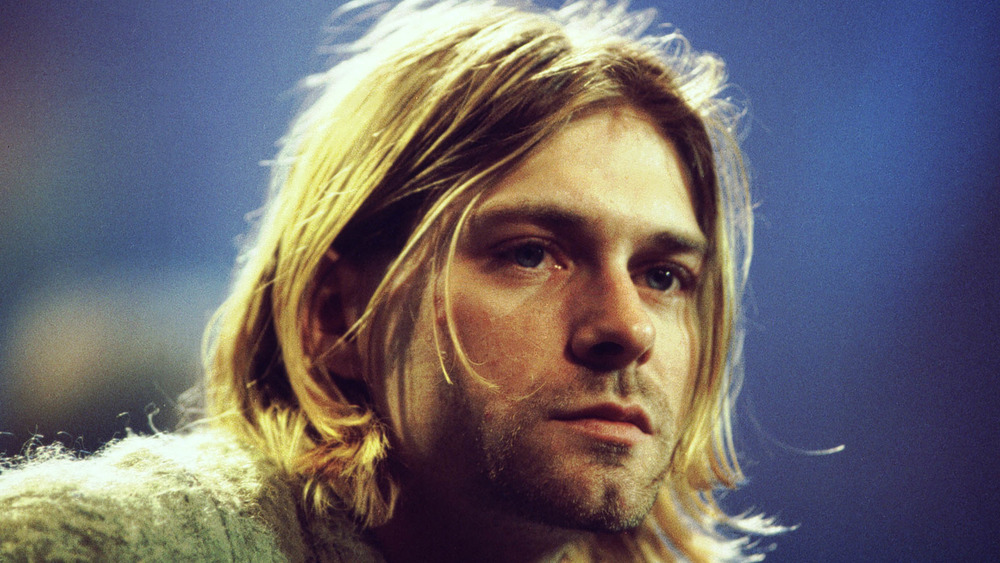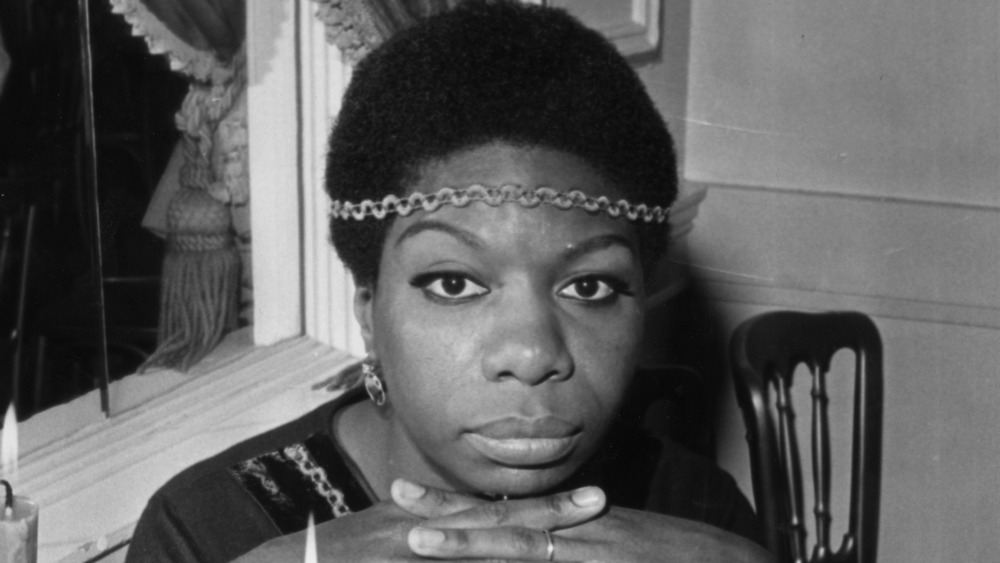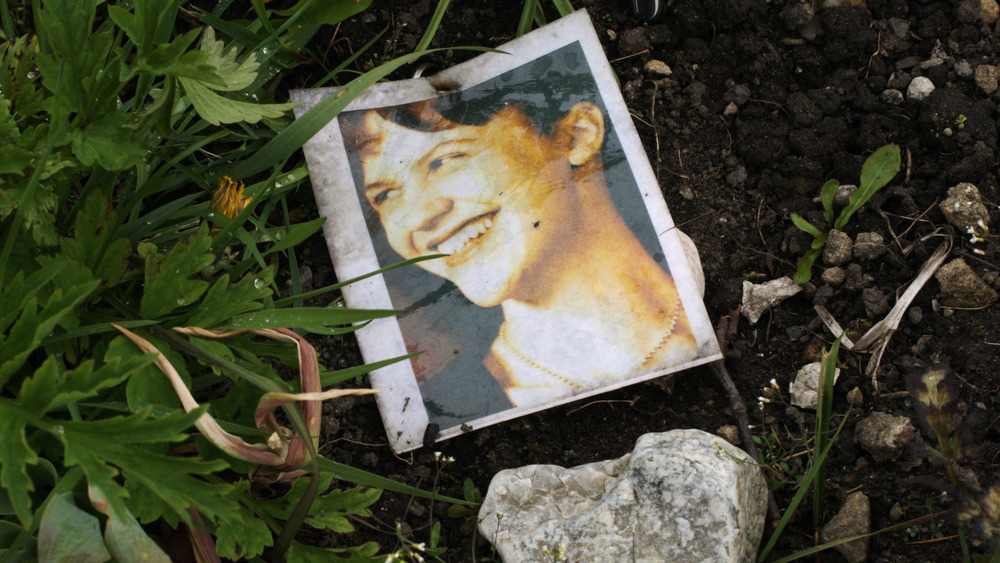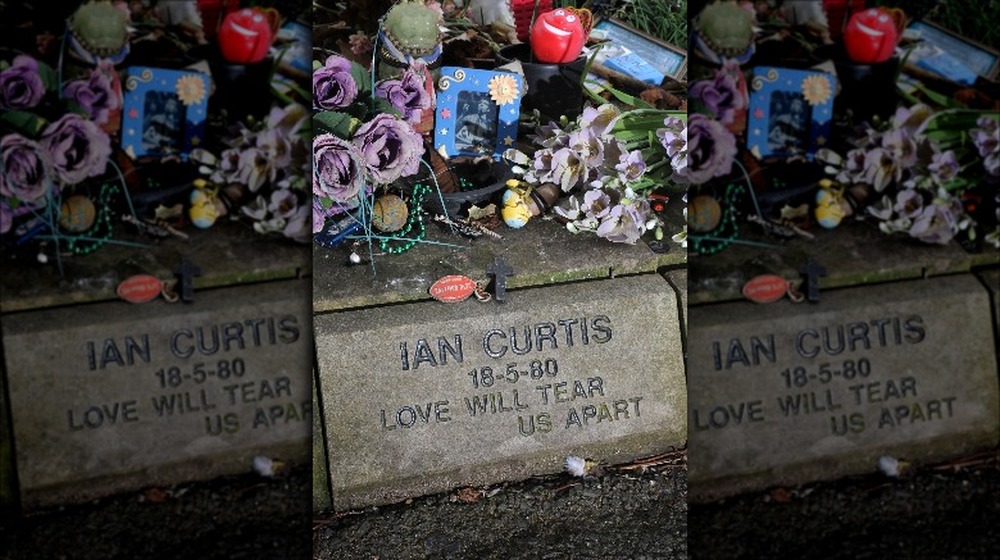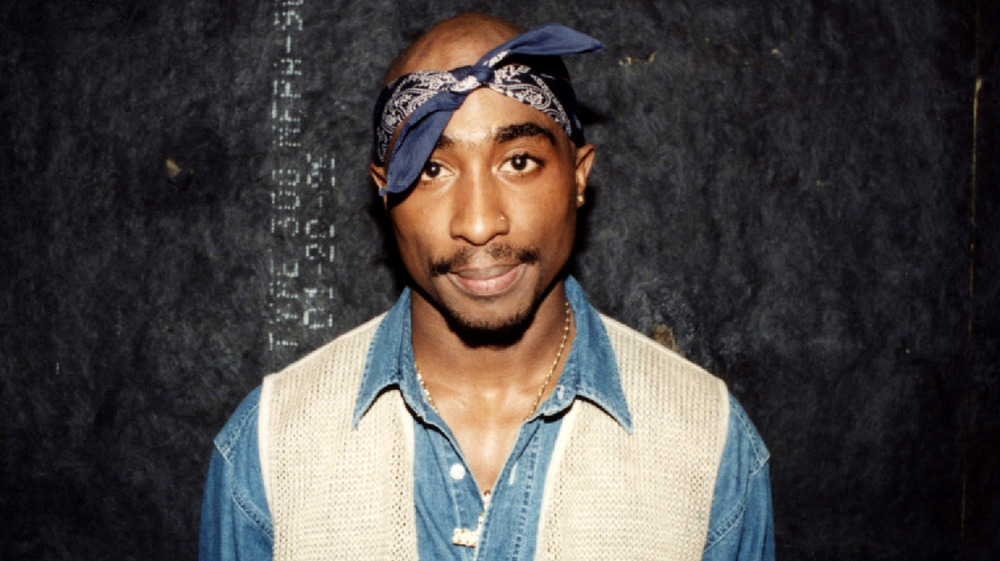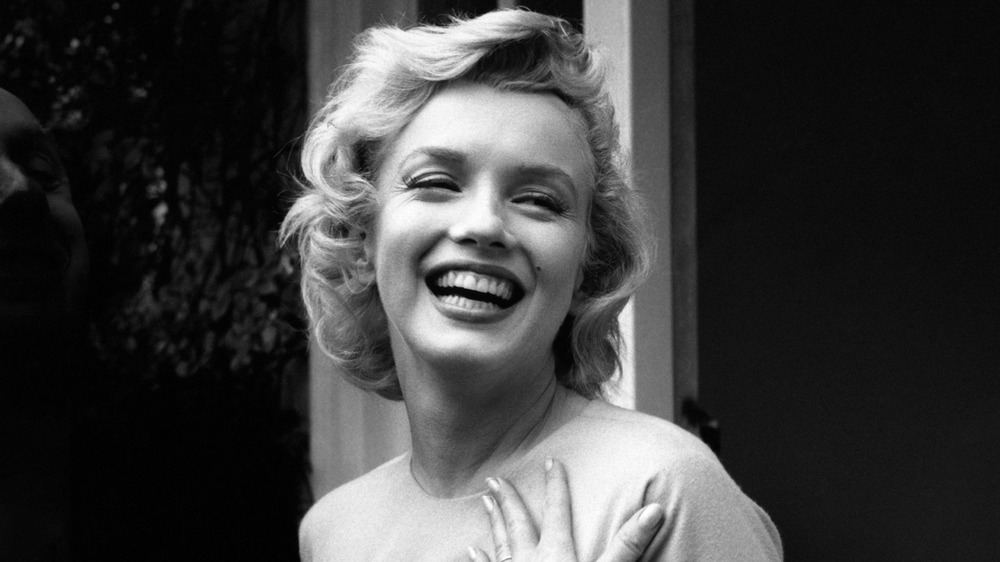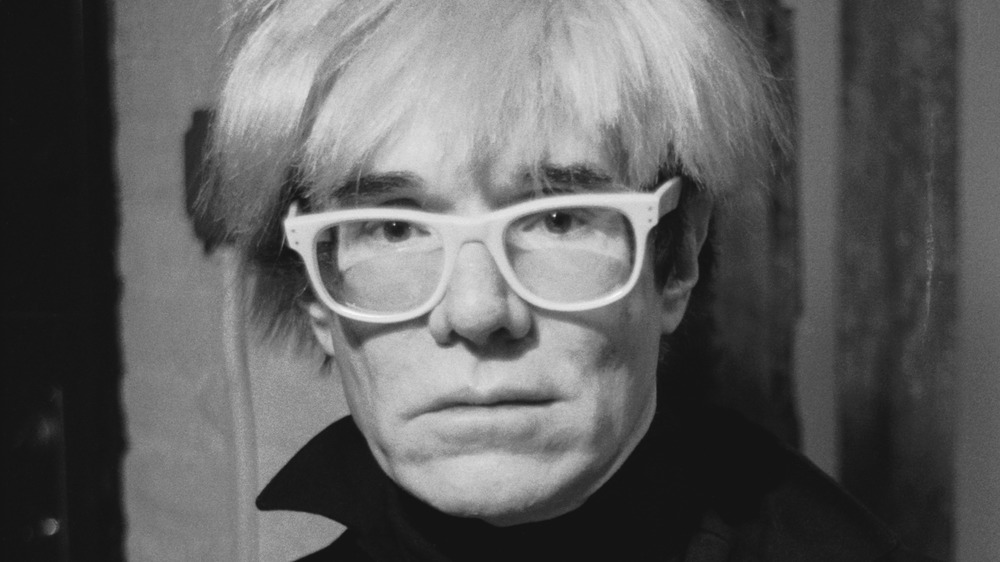Personal Diaries That Were Published After A Celeb's Death
We may receive a commission on purchases made from links.
Personal diaries and journals are often thought of as gateways into the mechanisms of a person's mind — how they perceive not only themselves but the world around them. They are seen as spaces of ultimate privacy, where secrets can strip their coats off and thrive. Of course, celebrities aren't any different from anyone else in this sense: our favorite stars also need a place to breathe, to think without consequence, and express themselves without outside judgement.
"I guess in my diary I'm not afraid to be boring," humorist David Sedaris, for example, once told NPR. "It's not my job to entertain anyone in my diary." Although fans so often feel connected to celebrities, the dubious question that begs to be answered is this: Should the general public have access to those diaries? It's a gray moral area, but the answer, more or less, seems to point to yes. In fact, it has become a bit of a standard practice for celebrities' diaries or journals to be published posthumously. It might be considered an extra treat for the fans, a parting gift of sorts by getting to "know" our favorite stars on a deeper level.
So, whose tell-all diary should you consider keeping on the coffee table? These are the personal diaries that were published after a celeb's death.
If you or someone you know is having suicidal thoughts, please call the National Suicide Prevention Lifeline at 1-800-273-TALK (8255) or text HOME to the Crisis Text Line at 741741.
Kurt Cobain's journals offer insight into his mind
When Kurt Cobain, legendary frontman of Nirvana (who, at the time, held an esteemed position as one of the biggest bands in the world), died by suicide at age 27 on April 5, 1994, the world stood still. Cobain's unmistakable talent and unique, daring voice has since forever cemented his place as a music icon, and fans have continued their fervent search for new sources of material to cling onto. So when Journals, a collection stemming from various diaries Cobain kept across years, was released in 2003, fans desperately flocked to pore over the pages.
The New York Times bestseller consists of hundreds of intimate entries and drawings, dating from Cobain's pre-Nirvana days right up to the band's peak, all of it scrawled out in inky pen. The lists, letters, manifestos, and lyrics drafts document the musician's feelings as his dreams were realized, and act as a sort of autobiography where we lack the chance at a proper one. "On his notebooks he wrote 'if you read you'll judge,'" NPR notes, "which sounds a little more sinister when you learn that his widow [Courtney Love] made $4 million for the publication of these private diaries."
When director Brett Morgan released the documentary, Montage of Heck, in 2015, Cobain's journals (via RogerEbert.com) helped to provide an authentic view at the man himself, rather than focusing on the legend. If you're still itching for a new Nirvana song, Journals might be the next best thing.
Nina Simone's highs and lows are documented in her diary
The inimitable, enigmatic gem that is Nina Simone needs no introduction. Known for her divine musical talents, with hits like the fiery "Mississippi Godd*m" and the classic "I Put a Spell On You," her impact as a musician and civil rights activist is still deeply felt today. Although her personal diaries were never made directly accessible to the public following her 2003 death at age 70, writer Joe Hagan had a chance to go through them seven years later, reporting back with his findings in a piece written for The Believer.
"Unknown to anyone save her husband," Hagan wrote, "she kept a small, leather-bound diary" throughout the 60s. "By turns luridly raw and heartbreaking, Simone's diary and letters illuminate her defining years as an artist," he explained, adding, "Occasionally, she seemed to take great solace in getting thoughts on paper, often in her most desperate hours." Indeed, the diary reveals the edge beneath Simone's silk, the electricity that ran through her as a result of her struggles with fame as a Black woman, an abusive relationship with husband Andrew Stroud, and an intense battle with bipolar disorder — which was only appropriately diagnosed two decades later.
To peer into what her life was really like behind the music may feel like spying, which is especially true of one entry in particular, where Simone writes, "Terribly tired and realize no one can help me — I am utterly miserable, completely, miserably, frighteningly alone." Truly haunting.
Alan Rickman's diaries are set for release in 2022
When actor Alan Rickman, beloved for his memorable and much adored roles as Severus Snape in the Harry Potter film series (among many others), passed away in at age 69 in 2016 as a result of his fight with cancer (via The Guardian), his devoted fanbase was no doubt devastated. While the star's onscreen talent and legacy would forever live on in the work he left behind, fans had some new Rickman content to look forward to at last: 2022 would see a collection of his staggering 27 diaries, which he kept from the '90s (when his career really began to take off) up to his death, released as a book.
Aptly titled The Diaries of Alan Rickman, per The Guardian, Rickman had actually planned on publishing the diaries himself prior to his passing (unlike several others celebs on this list), meaning the book would be edited (by Alan Taylor) and released to the public as he had intended. With Taylor calling the collection "anecdotal, indiscreet, witty, gossipy and utterly candid," Rickman's widow, Rima Horton, told the outlet she was "delighted" about the publication. She added, "The diaries reveal not just Alan Rickman the actor but the real Alan — his sense of humour, his sharp observation, his craftsmanship, and his devotion to the arts."
Sylvia Plath's lush personal diaries
Now regarded as an extension of her work, as well as a piece of art in its own right, the Unabridged Journals of Sylvia Plath gives us an intimate look into the mind of one of the greatest poets of all time. Following Plath's 1963 death by suicide, a highly-edited version of her diaries was published in 1982, comprised of only a third of the original source material, per the British Library. However, the highly-praised, unabridged, and essentially untouched version of Plath's diaries — spelling errors and all — was released in 2000.
Written in the poetic language she was best known for, Plath's journals offer a vivid sense of her personality and enhance the mystique of her legacy. The library notes that we can better understand her work when we read these entries, as well as hear her pain and passion, as her ambition practically electrifies the pages. In one entry, which is dated sometime before her initial suicide attempt in 1953, she writes, "Stupid girl. You will never win anyone through pity. You must create the right kind of dream, the sober, adult kind of magic: illusion born from disillusion."
"[Documenting] Plath's extreme loneliness and the pain of being an outsider," as the library puts it, these entries feel like a conversation with Plath herself, allowing the reader to get to know who she was beyond her talent.
A personal journal exposes Ian Curtis' struggles
The blue-eyed, magnetic 23-year-old Ian Curtis of Joy Division has long held the public's attention — even before his unfortunate death by suicide in May 1980, per History. His dance moves, which seemed to straddle the line right between erratic and oddly beautiful, made him an exciting performer to watch. Curtis' halting stage presence, paired alongside the band's stirring discography of songs — such as "Love Will Tear Us Apart" and the aptly named "Disorder" — have made Joy Division an undoubtedly timeless classic.
In 2014, a grand collection of handwritten notes and lyrics by Curtis was released for Joy Division fans called So This Is Permanence. The writings included are thoughtful, philosophical, and beautiful, with The Guardian calling the book "a visual counterpart to their sound, which was otherworldly and intimate, a hitherto unheard mixture of haunting melody and metallic clash." The writings shine light on the gleaming chaos that existed inside of Curtis, as a result of his battles with fame, depression, and epilepsy. In his large, sweeping handwriting on yellowed sheets of notebook paper, Curtis writes out lyrics that would make his name in music history with a maturity beyond his years. In co-editor Jon Savage's introduction, for example, Curtis muses in a 1979 note, "Reality is only a term, based on values and well worn principles, whereas the dream goes on forever."
Presented in a sleek, polished manner, So This Is Permanence offers a sad, yet riveting look into the work behind Joy Division.
Tupac Shakur's poetic diaries reveal insight into his mind
Released just three years after Tupac Shakur's tragic death at the age of 25 in September 1996 (via Britannica), The Rose that Grew from Concrete offers readers insight into one of the talented minds to ever grace the rap scene. Of course, we mean the music legend himself — Tupac. Remembered for furthering the genre of rap into the mainstream with his utilization of narrative storytelling, coupled with his expertly-crafted rhymes, Tupac's murder was a loss for the entire music industry.
Through this collection of his writing, then, fans felt as though it was a bit like hearing what else the late star had to say. Composed of several of his poems, doodles, and notes — all written between 1989 and 1991 with the same buoyancy for which he was known — Scholastic notes that it "captures [Tupac's] unrivaled passion and candor," as well as his "most honest and intimate thoughts, giving insight into his enigmatic life and its many contradictions."
Laying it all bare from discussing deep sadness to sharing questions following a miscarriage, the book ends with a final striking poem, aptly titled, "In the Event of My Demise." Musing on the tragic, eerily on-the-nose idea of his life ending before he has any say, Tupac notes with a bright sense of hope (via Genius), "I have come 2 grips with the possibility / And wiped the last tear from my eyes / I loved all who were positive / In the event of my Demise!"
Jean-Michel Basquiat's ingenious personal diaries
Known as "one of the most important artists of the 1980s," per the Princeton University Press, Jean-Michel Basquiat's diaries — simply titled The Notebooks — reveal that his process never truly ended between paintings. He was always creating and innovating, trying to go further with his neo-expressionist art — even if certain work was never originally intended to be seen publicly. The collection was released 2015, 27 years after Basquiat's death at age 27 in 1988 from an unfortunate heroin overdose, per Biography.
Taken from the many classic black-and-white composition notebooks he kept throughout his life, the collection is comprised of thought-provoking poems, commentary, and basic drawings. All written in Basquiat's infamous straight, stick-man handwriting, one page simply reads, "There is a race on," among other words and phrases that have been crossed out. Meanwhile, the images Basquiat jots down are very much like his artwork, a bit incoherent but seething with an urgent message.
"The late artist's rarely seen personal writings and sketches are expressions of 1980s downtown New York, and, perhaps, of his truest vision," reads The New York Times Style Magazine's review. "... Reading them puts you in the world of the paintings through sound alone."
These personal diaries expose Marilyn Monroe's underbelly
Although this collection was released in 2010, it truly could have been released at any time and had the same effect — that's how deeply Marilyn Monroe's impact and relevance as a Hollywood icon has remained. Composed of several letters, notes, and poems Monroe wrote throughout the course of her life from behind the cameras for which she always seemed to be posing, Fragments reveals an underbelly to one of the world's most celebrated of celebrities. She passed away nearly five decades prior in 1962 at age 36 of a sleeping drugs overdose, per The New York Times.
Both sad and uplifting, the collection aims to tell her story from Monroe's singular perspective, giving the world a genuine and realistic peek into her beliefs and way of thinking. This is told in various mediums of typewriter sheets, handwritten notes, and pages from an actual diary with photographs in between. Noting that "themes of loneliness, sadness and disappointment" make up much of the writing, the Daily Beast's review reads, "The dark side of Marilyn is not exactly a revelation. What does come as more of a surprise is the joyous, functioning Monroe that also leaps out of these pages."
Indeed, as Monroe writes in one passage, "Only parts of us will ever / touch parts of others / one's own truth is just / that really — one's own truth."
Heath Ledger's unsettling Joker diary
In 2013, a documentary titled Too Young To Die revealed the private diary Heath Ledger kept in preparation for his iconic role as the Joker, in what would be his last and most celebrated film, 2008's The Dark Knight (via BuzzFeed). His performance would win him a posthumous Academy Award, and curate Ledger's legacy as one of the best actors of his generation. However, it would also signal the actor's ultimate demise, as he would accidentally overdose on various prescription medications that January, according to CNN. He was 28.
The diary has not been officially released to the public in full, but it reportedly reveals the somewhat unsettling process Ledger underwent to play the villain, including handwritten notes, photographs of the original comic version of the Joker, and images of Malcolm McDowell's character in Stanley Kubrick's A Clockwork Orange. Ledger also writes out his lines in the diary to prepare. "I sat around in a hotel room in London for about a month, locked myself away, formed a little diary and experimented with voices," Ledger previously told Empire of the diary in 2007 (via BuzzFeed). "... He's just an absolute sociopath, a cold-blooded, mass-murdering clown."
Known for the isolation and studying that went along with his method acting, Ledger's own father described the Joker diary as "a whole new level" for his late son. Hauntingly, Ledger is said to have written the words, "BYE BYE," on the last page of the diary as he finished shooting The Dark Knight.
Andy Warhol's zany personal diaries
Released in 1989 under the simplistic title, The Andy Warhol Diaries, this collection has allowed fans of the quirky, ever iconic Andy Warhol to crawl into the artist's head, beneath his platinum blond hair, and see the world from his perspective. With entries spanning from across the late '70s up until 1987, just before his death of cardiac arrest following gallbladder surgery at age 58, per The New York Times, Warhol's daily life is documented through a series of long, full, and specific entries. Details of his lavish New York lifestyle are tallied up, including summaries of various dinners with friends, what their conversations were like, who wore what.
However, despite his influence still being recognized within the modern day art world, Warhol only briefly mentions his art throughout the book. Per The Guardian, there are no monologues about what the work means to him or his next big idea. In a 2010 revisit, the outlet measured the entries to the comparatively "lame" celebrity postings in the Twittersphere: "Andy's inability to present himself in a media-friendly light, not hiding his self-absorption, hypochondria, vulnerability or rudeness, shocks because of how rare it is to us now. Just maybe, in his diaries as in much else, Warhol was way ahead of the game."
So, while not as emotionally telling as other posthumously-published diaries on this list, The Andy Warhol Diaries still provide a look into the life of a high-brow artist for those curious.

